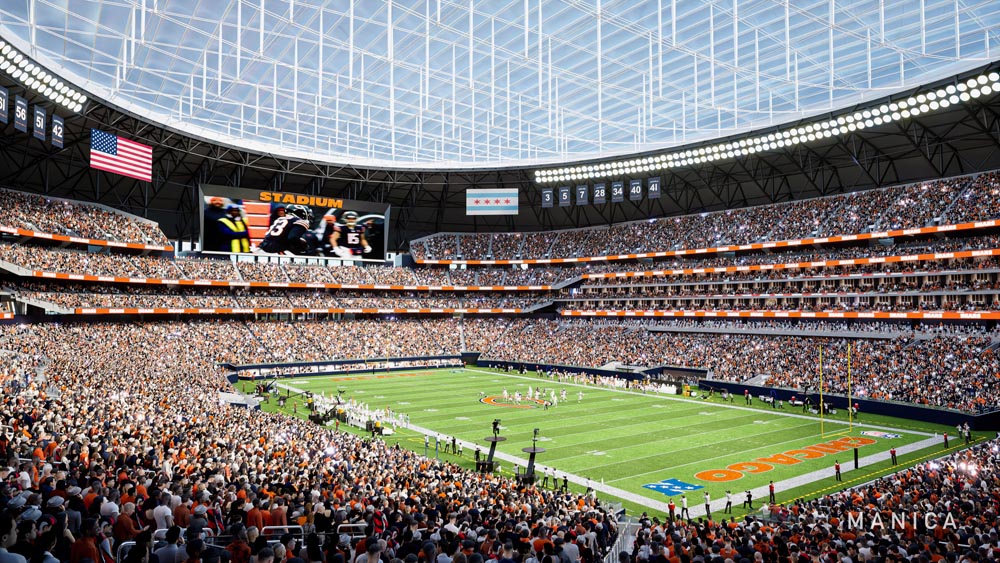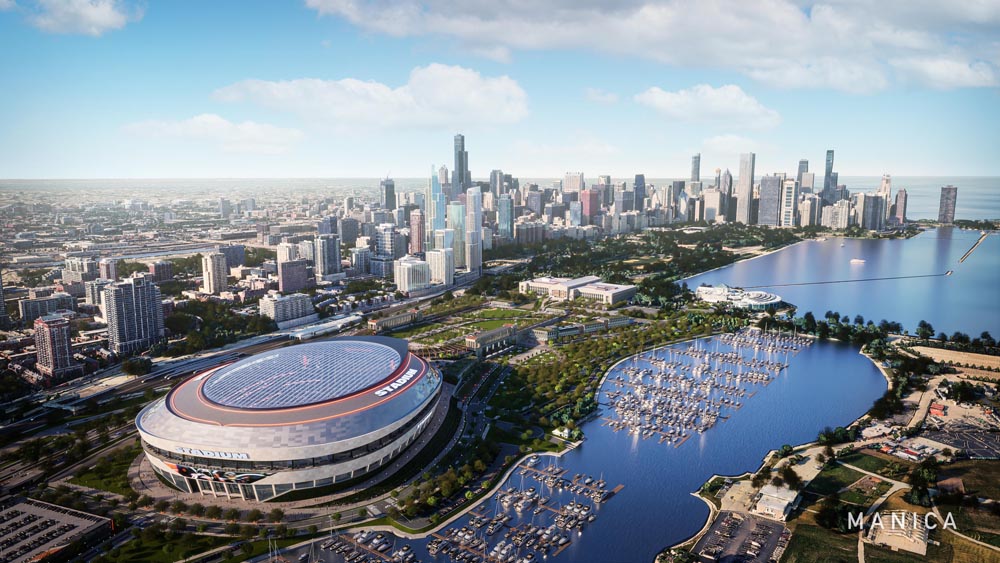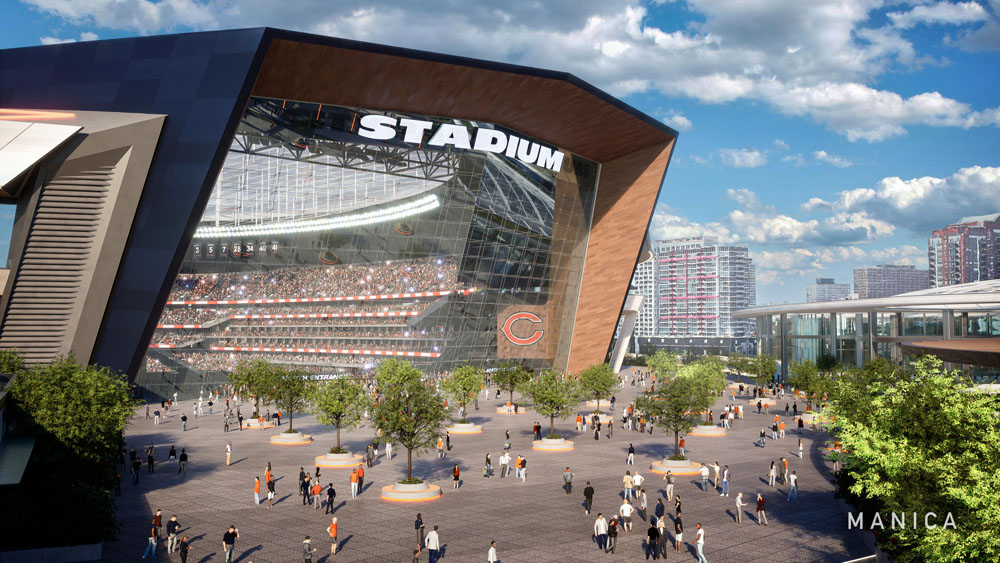The Chicago Bears want to demolish Soldier Field and replace it with a new domed state-of-the-art stadium. Including the necessary infrastructure measures, an investment of around 4 billion euros would be needed.
Soldier Field will be 100 years old in October and has been home to the Chicago Bears NFL team since 1971. However, as more than 20 years have passed since the last extensive modernisation and renovation, the franchise has long wanted a new, modern venue. The city of Chicago had actually promised to extensively renovate the venerable venue and spend up to €2 billion on it - provided the Bears saw their future in the city centre. However, they had recently pushed for their own construction project and had already acquired land in Arlington Heights, almost 50 kilometres north-west of the city centre. By the end of 2022, the Bears stated: “The only potential project the Chicago Bears are considering for a new stadium is Arlington Park.” Now it’s back to square one and the presentation of a joint project with the city.

Image: Chicago Bears
“This marks a pivotal moment for Chicago as we introduce a visionary project prioritizing the public good,” Chicago Mayor Brandon Johnson said in a statement. “The proposed stadium, accompanied by expanded open spaces and recreational facilities, exemplifies my administration’s commitment to enhancing the quality of life for all Chicagoans. […] I look forward to the positive impact it will have on our beloved city.”

Image: Chicago Bears
The Bears are therefore dependent on the support of the state, which is considering extending a hotel tax for this purpose. Governor J. B. Pritzker, however, has had reservations about giving the team money for years. He said as much immediately before the plans were presented: “I wonder if it’s a good deal for the taxpayers. […] There are a lot of priorities the state has, and I’m not sure this is among the highest priorities for taxpayers.”
While the consensus of all studies and economists in the USA is that public money for stadium projects is invariably a waste of tax revenue, for their billionaire owners these are welcome subsidies. Other points of criticism relate to the planned capacity and general necessity of the new building. Soldier Field has a capacity of 61,500, making it the smallest stadium in the NFL – a fact the Bears particularly criticise. The new building, on the other hand, will ‘only’ have around 65,000 seats (making it the third-smallest stadium in the league), with the increase in capacity to be achieved mainly by enlarging the standing room areas.

Image: Chicago Bears
The Bears, on the other hand, argue that the construction project would employ local labour, which would generate a one-off regional economic effect of USD 8.4 billion during the construction period alone, as well as a further USD 450 million annually through the operation of the venue.
In addition, the city of Chicago has never hosted a Super Bowl, the College Football Final or the NCAA Final Four in its history. A new building would drastically increase the chances of hosting these ‘marquee events’. (STADIAWORLD, 25.04.2024)